- Home
- Robert J. Sawyer
Flashforward
Flashforward Read online
“Robert J. Sawyer is a Canadian writer who is fast becoming one of the most important names in science fiction. FACTORING HUMANITY is one of the best ‘first-contact’ novels to come along in years. While variations of this plot may have been used before (recently, for example, the book and motion picture CONTACT), Sawyer’s ability as a storyteller makes FACTORING HUMANITY the best of the lot.”
ROCKY MOUNTAIN NEWS
“An intelligent and absorbing double-stranded narrative, generally well-paced, accelerates to hyperspeed in the last few pages.”
KIRKUS on FACTORING HUMANITY
Robert J. Sawyer’s award-winning science fiction has garnered both popular and critical acclaim. THE NEW YORK TIMES called FRAMESHIFT “filled to bursting with ideas, characters, and incidents,” while THE GAINESVILLE SUN said, “Sawyer is a brilliant stylist who depicts daily life events with a shattered worldview.”
Sawyer now brings us FLASHFORWARD, the story of a world-shattering discovery at the CERN research facility in Switzerland. The research team of Lloyd Simcoe and Theo Procopides is using the particle accelerator at CERN, in pursuit of the elusive Higgs Boson, a theoretical subatomic particle. But their experiment goes incredibly awry, and, for a few moments, the consciousness of the entire human race is thrown ahead by about twenty years.
While humanity must deal immediately with the destructive aftermath of the experiment—thousands were injured and killed as every single person’s body was left unconscious in the here-and-now—the greater implications take longer to surface. People who had no vision of the future seek to learn how they will die, while others seek out future lovers. Lloyd must deal with the guilt of accidentally causing the death of his fiancée’s child, while Theo gets caught up in the search for his own murderer. As the implications truly hit home, the pressure to repeat the experiment builds. Everyone wants a glimpse of the future, a chance to flashforward and see their successes…or learn how to avoid their failures.
ROBERT J. SAWYER lives in Thornhill, Ontario, Canada.
NOVELS BY ROBERT J. SAWYER
Golden Fleece*
Far-Seer
Fossil Hunter
Foreigner
End of an Era
The Terminal Experiment
Starplex
Frameshift*
Illegal Alien
Factoring Humanity*
Flashforward*
* published by Tor Books
ANTHOLOGIES
EDITED BY ROBERT J. SAWYER
Tesseracts 6 (with Carolyn Clink)
Crossing the Line (with David Skene-Melvin)
This is a work of fiction. All the characters and events portrayed in this novel are either fictitious or are used fictitiously.
FLASHFORWARD
Copyright © 1999 by Robert J. Sawyer
All rights reserved, including the right to reproduce this book, or portions thereof, in any form.
This book is printed on acid-free paper.
Edited by David G. Hartwell
A Tor Book
Published by Tom Doherty Associates, Inc.
175 Fifth Avenue
New York, NY 10010
Tor Books on the World Wide Web:
www.tor.com
Tor® is a registered trademark of Tom Doherty Associates, Inc.
Library of Congress Cataloging-in-Publication Data
Sawyer, Robert J.
Flashforward / Robert J. Sawyer. — 1st ed.
p. cm.
“A Tom Doherty Associates book.”
ISBN 0-312-86712-3 (alk. paper)
I. Title.
PR9199.3.S2533F58 1999
813'.54—dc21
99-21935
CIP
First Edition: June 1999
Printed in the United States of America
0 9 8 7 6 5 4 3 2 1
FOR RICHARD M. GOTLIB
Richard and I first met in high school in 1975. Back then, we each envisioned very different futures for ourselves. But one thing seemed absolutely clear: no matter how many years would pass, we’d always be friends. It’s now a quarter-century later, and I’m delighted that at least that part turned out exactly as planned.
ACKNOWLEDGMENTS
Sincere thanks to my agent Ralph Vicinanza, and his associate Christopher Lotts; my editor at Tor, David G. Hartwell, and his assistant, James Minz; Chris Dao and Linda Quinton, also of Tor; Tor publisher Tom Doherty; Rob Howard, Suzanne Hallsworth, Heidi Winter, and Harold and Sylvia Fenn of my Canadian distributor, H. B. Fenn and Company, Ltd.; Neil Calder, Head of the Media Service, European Organization for Particle Physics (CERN); Dr. John Cramer, Professor of Physics, University of Washington; Dr. Shaheen Hussain Azmi, Asbed Bedrossian, Ted Bleaney, Alan Bostick, Michael A. Burstein, Linda C. Carson, David Livingstone Clink, James Alan Gardner, Richard M. Gotlib, Terence M. Green, John-Allen Price, Dr. Ariel Reich, Alan B. Sawyer, Tim Slater, Masayuki Uchida, and Edo van Belkom; my father, John A. Sawyer, for letting me repeatedly borrow his vacation home at Bristol Harbour Village where much of this novel was written; and especially my lovely wife, Carolyn Clink.
Contents
Book I
Chapter 1 Chapter 2 Chapter 3 Chapter 4 Chapter 5 Chapter 6 Chapter 7 Chapter 8 Chapter 9 Chapter 10 Chapter 11
Book II
Chapter 12 Chapter 13 Chapter 14 Chapter 15 Chapter 16 Chapter 17 Chapter 18 Chapter 19 Chapter 20 Chapter 21 Chapter 22 Chapter 23 Chapter 24 Chapter 25 Chapter 26 Chapter 27
Book III
Chapter 28 Chapter 29 Chapter 30 Chapter 31 Chapter 32 Chapter 33
BOOK I
APRIL 2009
He who foresees calamities
suffers them twice over.
—Beilby Porteus
1
Day One: Tuesday, April 21, 2009
A SLICE THROUGH SPACETIME…
The control building for CERN’s Large Hadron Collider was new: it had been authorized in A.D. 2004 and completed in 2006. The building enclosed a central courtyard, inevitably named “the nucleus.” Every office had a window either facing in toward the nucleus or out toward the rest of CERN’s sprawling campus. The quadrangle surrounding the nucleus was two stories tall, but the main elevators had four stops: the two above-ground levels; the basement, which housed boiler rooms and storage; and the minus-one-hundred-meter level, which exited onto a staging area for the monorail used to travel along the twenty-seven-kilometer circumference of the collider tunnel. The tunnel itself ran under farmers’ fields, the outskirts of the Geneva airport, and the foothills of the Jura mountains.
The south wall of the control building’s main corridor was divided into nineteen long sections, each of which had been decorated with a mosaic made by an artist from one of CERN’s member countries. The one from Greece depicted Democritus and the origin of atomic theory; the one from Germany portrayed the life of Einstein; the one from Denmark, that of Niels Bohr. Not all of the mosaics had physics as their themes, though: the French one depicted the skyline of Paris, and the Italian one showed a vineyard with thousands of polished amethysts representing individual grapes.
The actual control room for the Large Hadron Collider was a perfect square, with wide, sliding doors positioned precisely in the centers of two of its sides. The room was two stories tall, and the upper half was walled with glass, so that tour groups could look down on the proceedings; CERN offered three-hour public tours Mondays and Saturdays at 09h00 and 14h00. Hanging flat against the walls below the windows were the nineteen member-state flags, five per wall; the twentieth spot was taken up by the blue-and-gold flag of the European Union.
The control room contained dozens of consoles. One was devoted to operating the particle injectors; it controlled the beginnings of experiments. Adjacent to it was a
nother with an angled face and ten inlaid monitors that would display the results reported by the ALICE and CMS detectors, the huge underground systems that would record and attempt to identify the particles produced by LHC experiments. Monitors on a third console showed portions of the gently curving underground collider tunnel, with the I-beam monorail track hanging from the ceiling.
Lloyd Simcoe, a Canadian-born researcher, sat at the injector console. He was forty-five, tall, and clean-shaven. His eyes were blue and his crewcut hair so dark brown that one could get away with calling it black—except at the temples, where about half of it had turned gray.
Particle physicists weren’t known for their sartorial splendor, and Lloyd had until recently been no exception. But he’d agreed a few months ago to donate his entire wardrobe to the Geneva chapter of the Salvation Army, and let his fiancée pick out all-new things for him. Truth be told, the clothes were a little flashy for his taste, but he had to admit that he’d never looked so sharp. Today, he was wearing a beige dress shirt; a coral-colored jacket; brown pants with exterior pouches instead of interior pockets; and—in a nod to fashion tradition—black Italian leather shoes. Lloyd had also adopted a couple of universal status symbols that also happened to be bits of local color: a Mont Blanc fountain pen, which he kept clipped to his jacket’s inside pocket, and a gold Swiss analog watch.
Seated on his right, in front of the detector console, was the master of the makeover herself, his fiancée, engineer Michiko Komura. Ten years Lloyd’s junior at thirty-five, Michiko had a small, upturned nose and lustrous black hair that she had styled in the currently popular page-boy cut.
Standing behind her was Theo Procopides, Lloyd’s research partner. At twenty-seven, Theo was eighteen years younger than Lloyd; more than one wag had compared the conservative middle-aged Lloyd and his fiery Greek colleague to the team of Crick and Watson. Theo had curly, thick, dark hair, gray eyes, and a prominent, jutting jaw. He almost always wore red denim jeans—Lloyd didn’t like them, but no one under thirty wore blue jeans anymore—and one of an endless string of T-shirts depicting cartoon characters from all over the world; today he had on the venerable Tweety Bird. A dozen other scientists and engineers were positioned at the remaining consoles.
Moving up the cube…
Except for the gentle hum of air conditioning and the soft whir of equipment fans, the control room was absolutely silent. Everyone was nervous and tense, after a long day of preparing for this experiment. Lloyd looked around the room then took a deep breath. His pulse was racing, and he could feel butterflies gyrating in his stomach.
The clock on the wall was analog; the one on his console, digital. They were both rapidly approaching 17h00—what Lloyd, even after two years in Europe, still thought of as 5:00 P.M.
Lloyd was director of the collaborative group of almost a thousand physicists using the ALICE (“A Large Ion Collider Experiment”) detector. He and Theo had spent two years designing today’s particle collision—two years, to do work that could have taken two lifetimes. They were attempting to recreate energy levels that hadn’t existed since a nanosecond after the Big Bang, when the universe’s temperature was 10,000,000,000,000,000 degrees. In the process, they hoped to detect the holy grail of high-energy physics, the long-sought-after Higgs boson, the particle whose interactions endowed other particles with mass. If their experiment worked, the Higgs, and the Nobel that would likely be awarded to its discoverers, should be theirs.
The whole experiment was automated and precisely timed. There was no great knife switch to pull down, no trigger hidden under a spring-loaded cover to push. Yes, Lloyd had designed and Theo had coded the core modules of the program for this experiment, but everything was now under the control of a computer.
When the digital clock reached 16:59:55 Lloyd started counting down out loud with it. “Five.”
He looked at Michiko.
“Four.”
She smiled back encouragingly. God, how he loved her—
“Three.”
He shifted his gaze to young Theo, the wunderkind—the kind of youthful star Lloyd had hoped to have been himself but never was.
“Two.”
Theo, ever cocky, gave him a thumbs-up sign.
“One.”
Please, God…thought Lloyd. Please.
“Zero.”
And then—
And then, suddenly, everything was different.
There was an immediate change in the lighting—the dim illumination of the control room was replaced with sunlight coming through a window. But there was no adjustment, no discomfort—and no sense that Lloyd’s pupils were contracting. It was as if he were already used to the brighter light.
And yet Lloyd couldn’t control his eyes. He wanted to look around, to see what was going on, but his eyes moved as if under their own volition.
He was in bed—naked, apparently. He could feel the cotton sheets sliding now over his skin as he propped himself up on one elbow. As his head moved, he caught a brief glimpse of dormer windows, looking out apparently from the second floor of a country house. There were trees visible, and—
No, that couldn’t be. These leaves had turned, frozen fire. But today was April 21—spring, not autumn.
Lloyd’s view continued to shift and suddenly, with what should have been a start, he realized he wasn’t alone in bed. There was someone else with him.
He recoiled.
No—no, that wasn’t right. He didn’t physically react at all; it was as if his body were divorced from his mind. But he felt like recoiling.
The other person was a woman, but—
What the hell was going on?
She was old, wrinkled, her skin translucent, her hair a white gossamer. The collagen that had once filled her cheeks had settled as wattles at the sides of her mouth, a mouth now smiling, the laugh lines all but lost amongst the permanent creases.
Lloyd tried to roll away from the hag, but his body refused to cooperate.
What in God’s name was happening?
It was spring, not autumn.
Unless—
Unless, of course, he was now in the southern hemisphere. Transported, somehow, from Switzerland to Australia…
But no. The trees he’d glimpsed through the window were maples and poplars; it had to be North America or Europe.
His hand reached out. The woman was wearing a navy-blue shirt. It wasn’t a pajama top, though; it had buttoned-down epaulets and several pockets—adventure clothing made of cotton duck, the kind L. L. Bean or Tilley sells, the kind a practical woman might wear to do her gardening. Lloyd felt his fingers brushing the fabric now, feeling its softness, its pliancy. And then—
And then his fingers found the button, hard, plastic, warmed by her body, translucent like her skin. Without hesitation, the fingers grasped the button, pushed it out, slipped it sideways through the raised stitching around the buttonhole. Before the top fell open, Lloyd’s gaze, still acting on its own initiative, lifted again to the old woman’s face, locking onto her pale blue eyes, the irises haloed by broken rings of white.
He felt his own cheeks drawing tight as he smiled. His hand slipped inside the woman’s top, found her breast. Again he wanted to recoil, snapping his hand back. The breast was soft and shriveled, the skin hanging loosely on it—fruit gone bad. The fingers drew together, following the contours of the breast, finding the nipple.
Lloyd felt a pressure down below. For a horrible moment, he thought he was getting an erection, but that wasn’t it. Instead, suddenly, there was a sense of fullness in his bladder; he had to urinate. He withdrew his hand and saw the old woman’s eyebrows go up inquisitively. Lloyd could feel his shoulders rise and fall, a little shrug. She smiled at him—a warm smile, an understanding smile, as if this were the most natural thing in the world, as if he often had to excuse himself at the outset. Her teeth were slightly yellow—the simple yellow of age—but otherwise in excellent shape.
At last his body did what he’d been
willing all along: it rolled away from the woman. Lloyd felt a pain in his knee as he did so, a sharp jab. It hurt, but he outwardly ignored it. He swung his legs off the bed, feet slapping softly against the cool hardwood floor. As he rose, he saw more of the world outside the window. It was either mid-morning or mid-afternoon, the shadow cast by one tree falling sharply across the next. A bird had been resting in one of the boughs; it was startled by the sudden movement in the bedroom and took wing. A robin—the large North American thrush, not the small Old World robin; this was definitely the United States or Canada. In fact, it looked a lot like New England—Lloyd loved the fall colors in New England.
Lloyd found himself moving slowly, almost shuffling across the floorboards. He realized now that this room wasn’t in a house, but rather a cottage; the furnishings were the usual vacation-home hodgepodge. That night table—low-slung, made of particle board with a wallpaper-thin veneer of fake woodgrain on top: he recognized it, at least. A piece of furniture he’d bought as a student, and had eventually put in the guest room at the house in Illinois. But what was it doing here, in this unfamiliar place?
He continued along. His right knee bothered him with each step; he wondered what was wrong with it. A mirror was hanging on the wall; its frame was knotty pine, covered over with clear varnish. It clashed with the darker “wood” of the night table, of course, but—
Jesus.
Jesus Christ.
Of their own accord, his eyes looked into the mirror as he passed, and he saw himself—
For a half-second he thought it was his father.
But it was him. What hair was left on his head was entirely gray; that on his chest was white. His skin was loose and lined, his gait stooped.
Could it be radiation? Could the experiment have exposed him? Could—
No. No, that wasn’t it. He knew it in his bones—in his arthritic bones. That wasn’t it.
He was old.
It was as if he’d aged twenty years or more, as if—

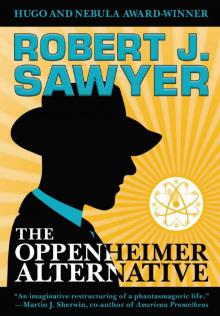 The Oppenheimer Alternative
The Oppenheimer Alternative Factoring Humanity
Factoring Humanity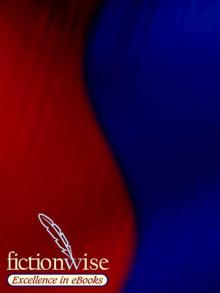 The Shoulders of Giants
The Shoulders of Giants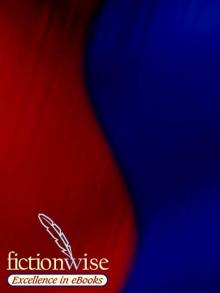 Stream of Consciousness
Stream of Consciousness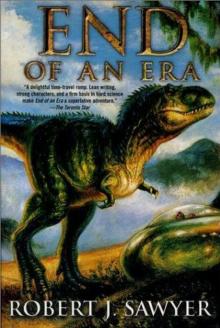 End of an Era
End of an Era The Terminal Experiment
The Terminal Experiment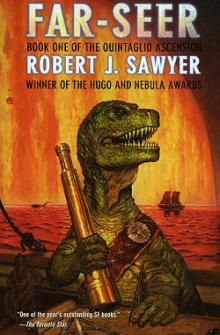 Far-Seer
Far-Seer Mindscan
Mindscan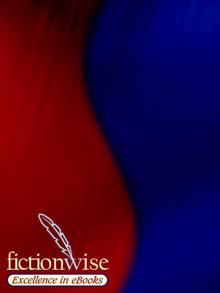 You See But You Do Not Observe
You See But You Do Not Observe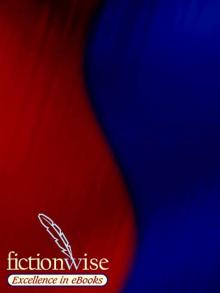 Star Light, Star Bright
Star Light, Star Bright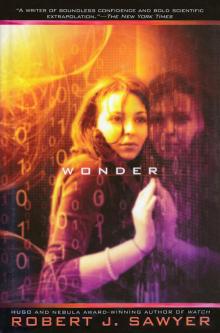 Wonder
Wonder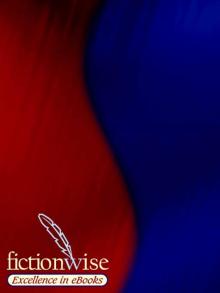 Wiping Out
Wiping Out Flashforward
Flashforward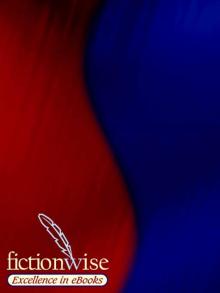 Above It All
Above It All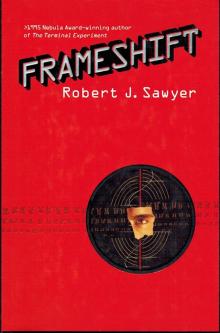 Frameshift
Frameshift The Neanderthal Parallax, Book One - Hominids
The Neanderthal Parallax, Book One - Hominids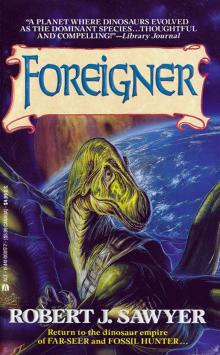 Foreigner
Foreigner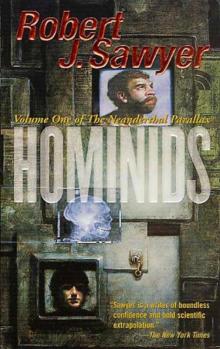 Neanderthal Parallax 1 - Hominids
Neanderthal Parallax 1 - Hominids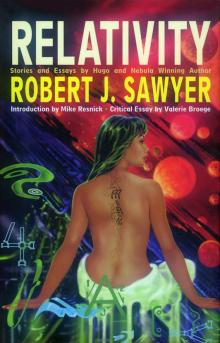 Relativity
Relativity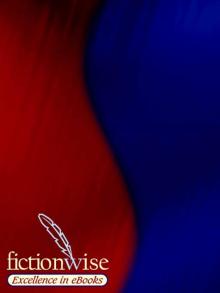 Identity Theft
Identity Theft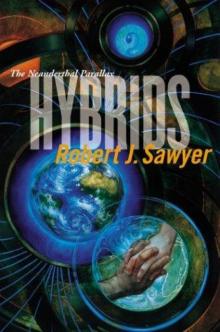 Hybrids np-3
Hybrids np-3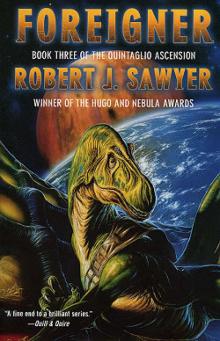 Foreigner qa-3
Foreigner qa-3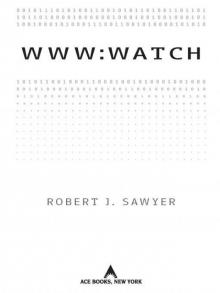 WWW: Watch
WWW: Watch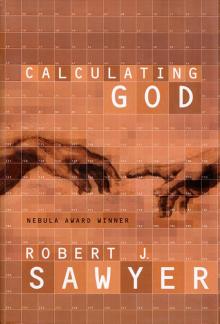 Calculating God
Calculating God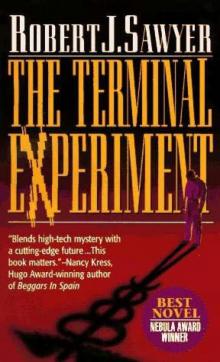 The Terminal Experiment (v5)
The Terminal Experiment (v5)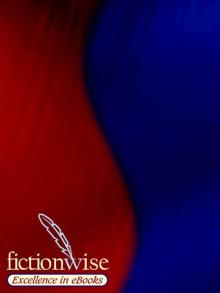 Peking Man
Peking Man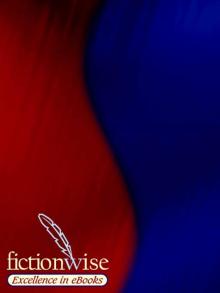 The Hand You're Dealt
The Hand You're Dealt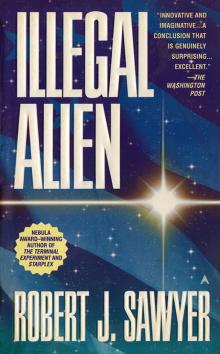 Illegal Alien
Illegal Alien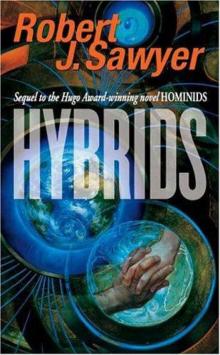 Neanderthal Parallax 3 - Hybrids
Neanderthal Parallax 3 - Hybrids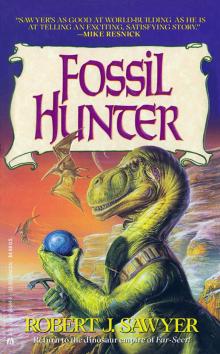 Fossil Hunter
Fossil Hunter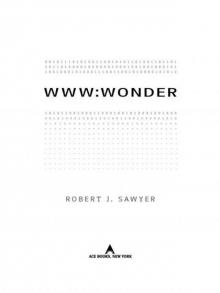 WWW: Wonder
WWW: Wonder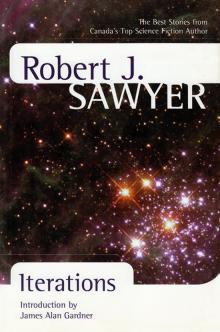 Iterations
Iterations Red Planet Blues
Red Planet Blues Rollback
Rollback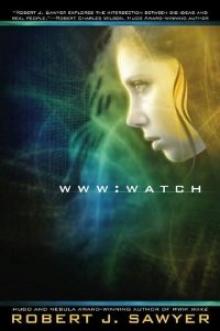 Watch w-2
Watch w-2 Gator
Gator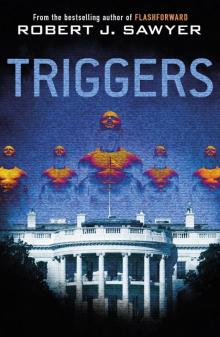 Triggers
Triggers Neanderthal Parallax 2 - Humans
Neanderthal Parallax 2 - Humans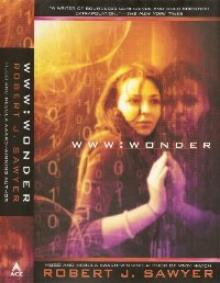 Wonder w-3
Wonder w-3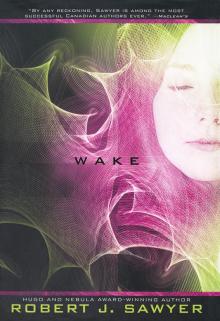 Wake
Wake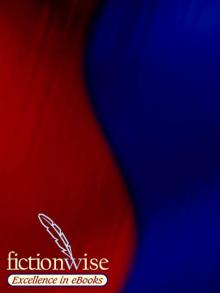 Just Like Old Times
Just Like Old Times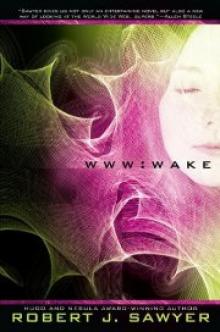 Wake w-1
Wake w-1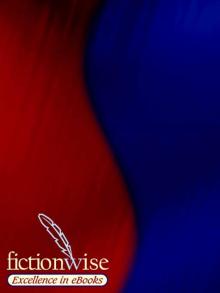 Fallen Angel
Fallen Angel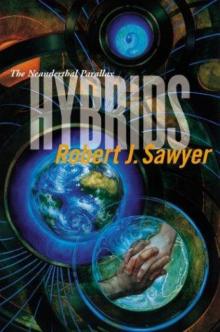 Hybrids
Hybrids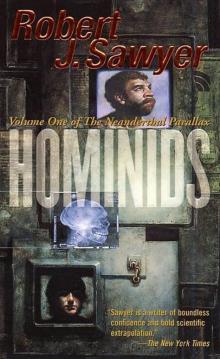 Hominids tnp-1
Hominids tnp-1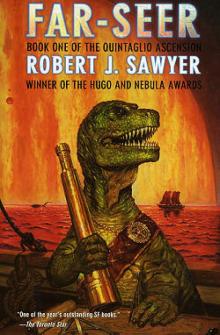 Far-Seer qa-1
Far-Seer qa-1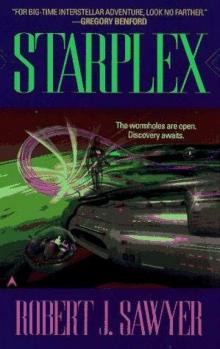 Starplex
Starplex Hominids
Hominids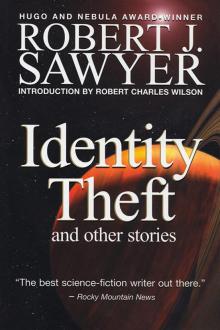 Identity Theft and Other Stories
Identity Theft and Other Stories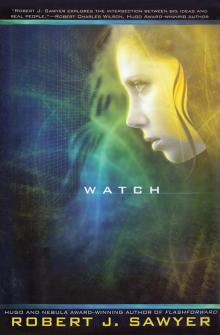 Watch
Watch Golden Fleece
Golden Fleece Quantum Night
Quantum Night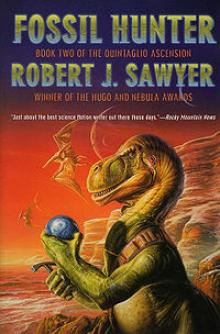 Fossil Hunter qa-2
Fossil Hunter qa-2 Humans np-2
Humans np-2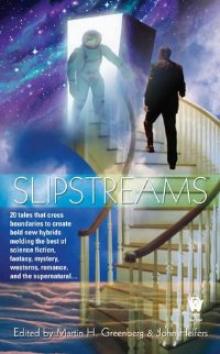 Biding Time
Biding Time